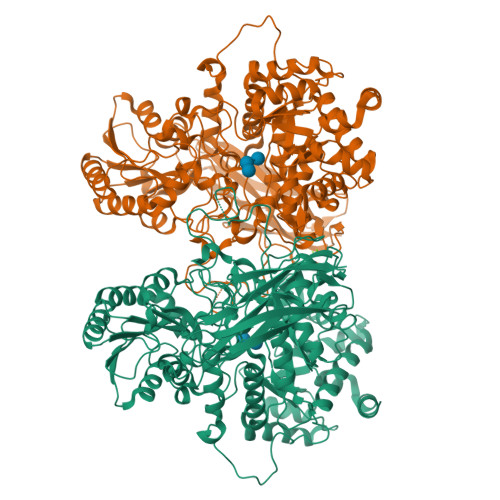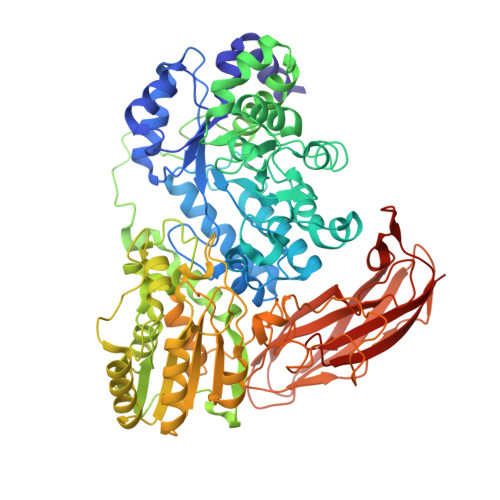Catalytic Cycle of Glycoside Hydrolase BglX fromPseudomonas aeruginosaand Its Implications for Biofilm Formation.
Mahasenan, K.V., Batuecas, M.T., De Benedetti, S., Kim, C., Rana, N., Lee, M., Hesek, D., Fisher, J.F., Sanz-Aparicio, J., Hermoso, J.A., Mobashery, S.(2020) ACS Chem Biol 15: 189-196
- PubMed: 31877028
- DOI: https://doi.org/10.1021/acschembio.9b00754
- Primary Citation of Related Structures:
6R5I, 6R5N, 6R5O, 6R5P, 6R5R, 6R5T, 6R5U, 6R5V - PubMed Abstract:
BglX is a heretofore uncharacterized periplasmic glycoside hydrolase (GH) of the human pathogen Pseudomonas aeruginosa . X-ray analysis identifies it as a protein homodimer. The two active sites of the homodimer comprise catalytic residues provided by each monomer. This arrangement is seen in <2% of the hydrolases of known structure. In vitro substrate profiling shows BglX is a catalyst for β-(1→2) and β-(1→3) saccharide hydrolysis. Saccharides with β-(1→4) or β-(1→6) bonds, and the β-(1→4) muropeptides from the cell-wall peptidoglycan, are not substrates. Additional structural insights from X-ray analysis (including structures of a mutant enzyme-derived Michaelis complex, two transition-state mimetics, and two enzyme-product complexes) enabled the comprehensive description of BglX catalysis. The half-chair ( 4 H 3 ) conformation of the transition-state oxocarbenium species, the approach of the hydrolytic water molecule to the oxocarbenium species, and the stepwise release of the two reaction products were also visualized. The substrate pattern for BglX aligns with the [β-(1→2)-Glc] x and [β-(1→3)-Glc] x periplasmic osmoregulated periplasmic glucans, and possibly with the Psl exopolysaccharides, of P. aeruginosa . Both polysaccharides are implicated in biofilm formation. Accordingly, we show that inactivation of the bglX gene of P. aeruginosa PAO1 attenuates biofilm formation.
Organizational Affiliation:
Department of Chemistry and Biochemistry , University of Notre Dame , Notre Dame , Indiana 46556 , United States.






















